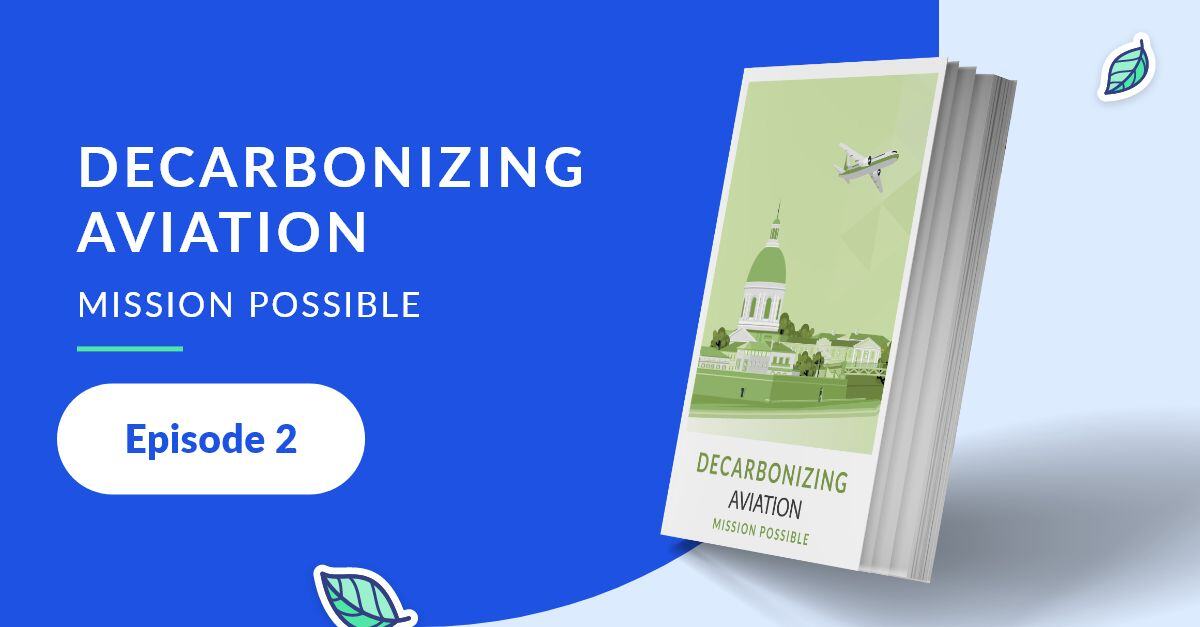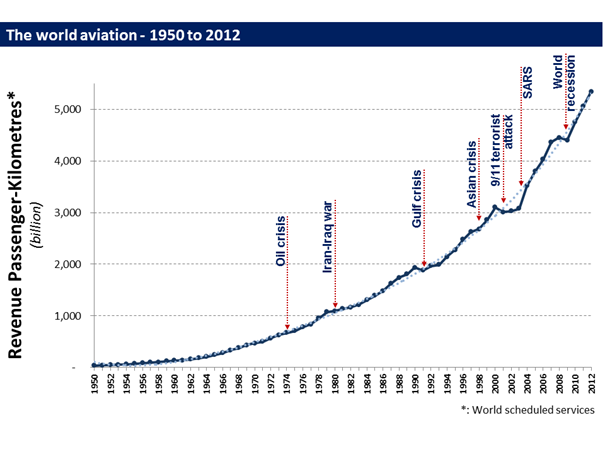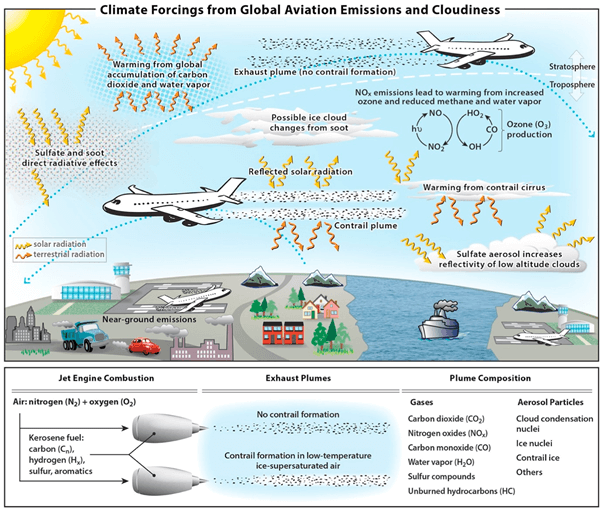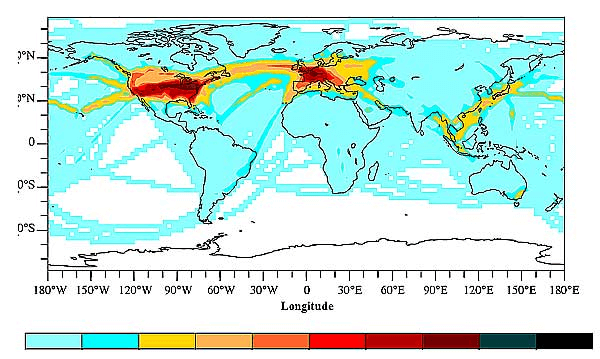[Decarbonizing Aviation] Episode 2: Why is aviation so scrutinized?
If you want to learn more about the opportunities and challenges of aviation decarbonization, you've come to the right place!
|
This mini-series of small articles will present you successively:
In this second article, you will understand why aviation’s responsibility exceeds its current CO2 footprint. |
Aviation growth
Even though aviation’s growth has come to a drastic and dramatic halt with the Covid-19 pandemic (as we write this article in October 2020, air traffic worldwide is still 50% below the 2019 level), everybody agrees the long-term demand for aviation should not diminish.
When we look at the past, we can see that aviation’s growth has always overcome the various crises this industry has experienced.
This one is certainly unprecedented, and nobody expects a return to 2019 level before 2024 at best. But if we focus on the longer term, Boeing’s most recent market outlook[1] still expects an average 4% yearly growth for the next 20 years.
By projecting this growth, aviation CO2 emissions can increase by 200% by 2050. We are far from the Paris Agreement objectives required to reduce CO2 emissions by 55% by 2030.
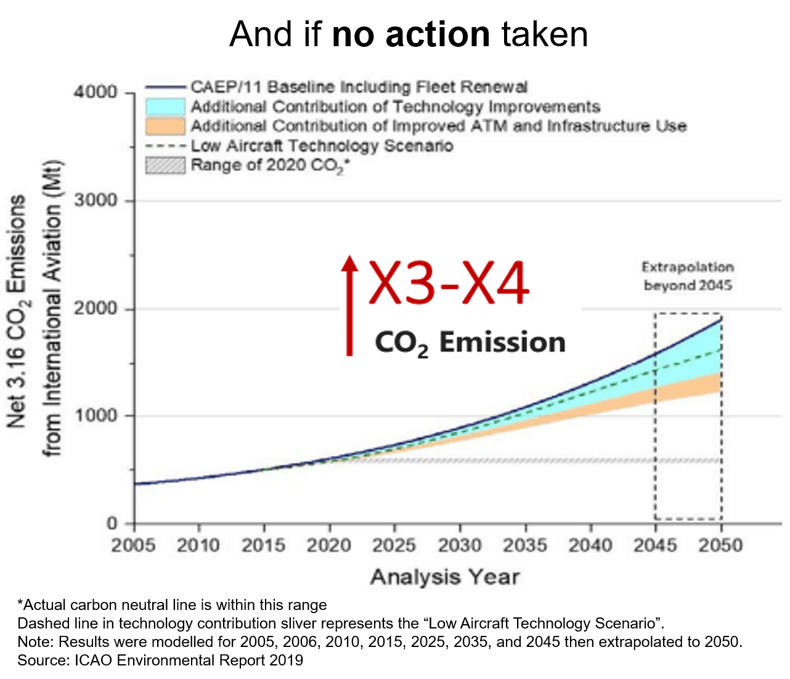
An additional concern with this growth is that it’s hard to find alternate transportation means for aviation.
We don’t have any substitute for airplanes for trans-oceanic traffic. It’s hard to imagine what could prevent air travel development in a fast-growing country like Indonesia, which extends over 5000km from West to East and contains 17,000 islands.
Even in a continent like Europe with excellent infrastructures and a dense railway network, it can take days to travel from one country to another by train.
That means that we need to work hard on decarbonizing aviation.
Other global warming effects and scientific uncertainly
Another issue is that CO2 doesn’t tell the whole story. Like all industries, aviation emits other gases that have a warming or cooling effect on our planet.
We rate this effect with effective radiative forcing, which is expressed in watt / m2. The larger the effective radiative forcing, the more the gas contributes to global warming.
Effective radiative forcing can sometimes be hard to estimate because of complex chemical or physical processes that can take place in the atmosphere.
This figure from the recent research paper by D.S. Lee et al.[2] shows some of these aviation-induced emissions processes.
The same research paper summarizes the effective radiative forcing from the various aviation emissions and confidence levels.
We can draw several conclusions from this diagram:
- CO2 is the only aviation-induced greenhouse gas for which we really understand the effective radiative forcing.
- The level of scientific understanding for all others is, at most, medium to low.
- The non-CO2 impact of aviation emissions could be twice as strong as the impact of CO2 emissions
So, should I triple the tons of CO2 to get the real impact of aviation? Does that mean that its share of responsibility is closer to 10% rather than 3%?
When computing the share of responsibility, one should compare apple to apples. Either compare aviation CO2 emissions with all other CO2 emissions or compare aviation radiative forcing with all other radiative forcings.
And according to this same research paper, the total effective radiative forcing of aviation (CO2 and non-CO2) still accounts for 3.5% of all anthropogenic radiative forcing.
A zoom on contrails
Contrails (condensation trails) are the white trails that you can sometimes see in the sky behind an aircraft. In certain conditions of humidity, engine soot and plumes can cause ice particles to nucleate, and this leads to contrail-induced cirrus clouds.
They can be a subject of passionate debates and sometimes myths, one reason being that they are… visible, unlike most greenhouse gases.

Contrails above the south-east US. By Louis Nguyen, NASA Langley Research Center - Source: earthobservatory.nasa.gov
The Intergovernmental Panel on Climate Change (IPCC) estimates that contrails cover between 0.02% and 0.1% of the Earth’s surface with a local maximum of 5% over the eastern USA[3].
Worldwide contrail coverage (Source: grida.no)
Contrails contribute to global warming in two opposite ways: during the day, they cool down the Earth due to the albedo (the reflection of the clouds), but at night they warm it due to the greenhouse effect
Combining the two effects, it is estimated that contrails increase global warming, possibly twice as much as aviation CO2 on a short horizon (20 years), but only half as much as CO2 on a longer-term (100 years)[4].
What’s up in the next episode?
The next episode of this series is entitled “Aviation track record and roadmap”.
It will address the following topics:
- Track record of technological improvement
- Industry commitment to reduce its net emissions by 50%
- Roadmap
References
[1] http://www.boeing.com/commercial/market/commercial-market-outlook/
[2] https://www.sciencedirect.com/science/article/pii/S1352231020305689?via%3Dihub
[3] https://www.grida.no/climate/ipcc/aviation/038.htm
[4] https://www.sciencedirect.com/science/article/pii/S1352231020305689?via%3Dihub
WANT TO LEARN MORE?
Discover airline's fuel-saving tips & best practices in The Green Airlines Fuel Book


